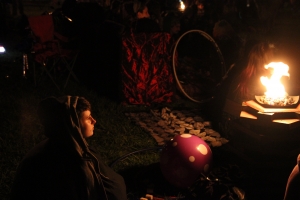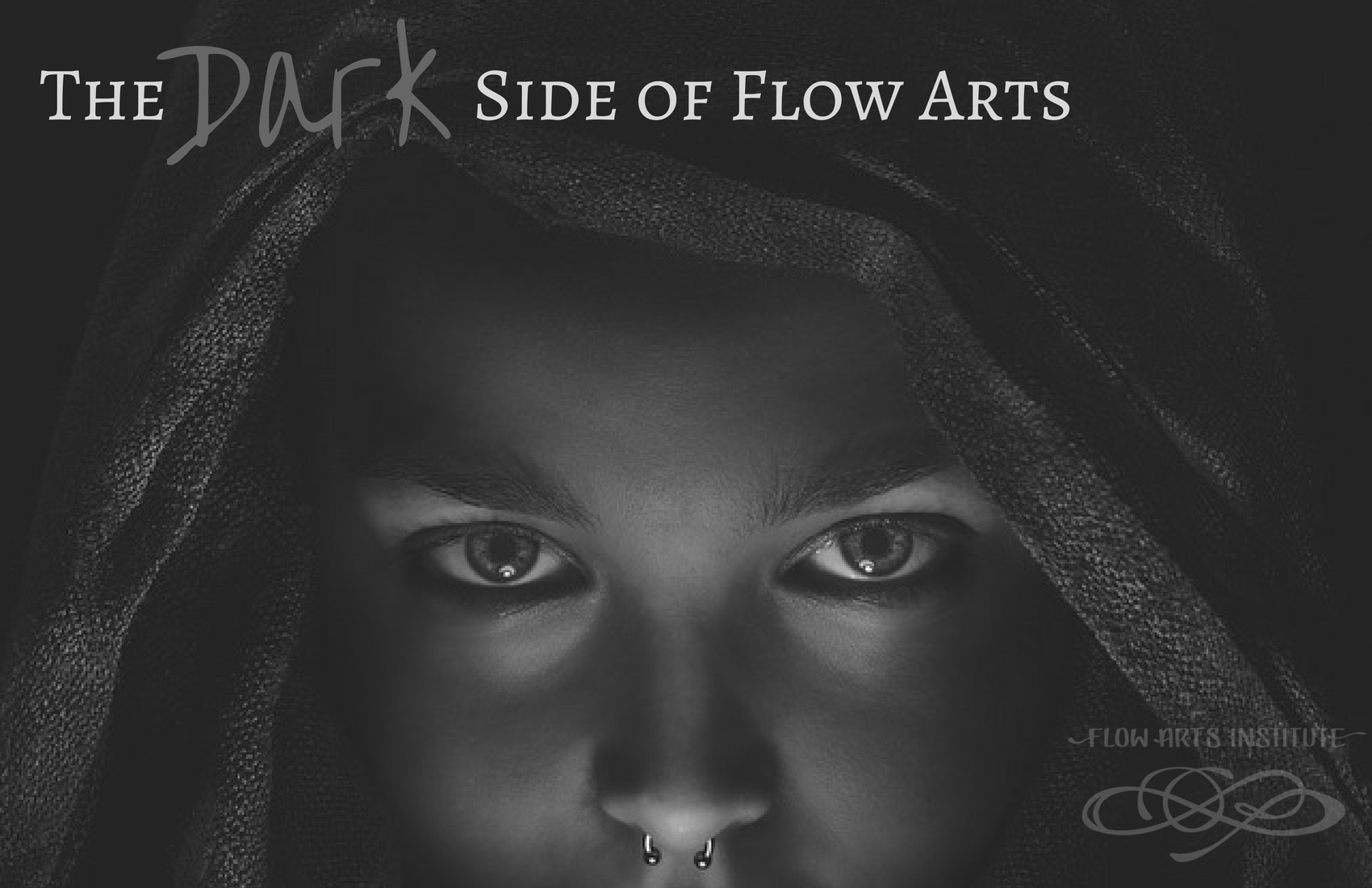This article is adapted from Laura Riva’s article “The Dark Side of Dance Addiction”
Thanks to April Choi for the adaptation. You can find the original Facebook note here.
We love to call ourselves “Flow Artists” and performers that are one with our art.
We’re even proud of it. We glorify flying to other continents to pursue our hobby. We see world-famous flow artists with Facebook accounts full of fabulous people. We laugh about spending more time on flow related activities than our day jobs.
I’m one of them – and I’m happy to be. It has given me an international network of great friends. It has challenged me physically and mentally. It has given me a sense of purpose and discipline. I honestly can’t imagine my life without flow as a major focus.
But, this wonderful addiction has a dark side.
The flow arts has become a very social activity. But, there are flow artists out there who are incredibly, profoundly lonely – especially in large scenes.
The flow arts are somewhat like living in a city. You may be surrounded by people – but that doesn’t mean you know them. You can touch, interact with, and talk to people around you without actually engaging in a relationship.
Some of the most die-hard flow artists substitute flow for interpersonal connection. Sometimes it’s because they feel awkward in social contexts. The physicality and technical aspects of flow arts double as a substitute for potentially awkward conversations. Developing flow skills become a form of ‘social credibility’, with flow desirability replacing real friendship.
Even worse, many new flow addicts end up losing touch with old friends as they become more ‘serious’ about flow. In addition to not developing strong connections with their fellow flow artists, they let their old friendships deteriorate.
Eventually, the flow addict realizes they don’t really know anyone – even if they’re one of the most sought-after flow artists at a festival. That can be an incredibly lonely realization.
When you venture into the social flow world, build friendships. You don’t have to be friends with everyone (no one is, even if they seem to like it). Even having 2-3 actual friends can alleviate the isolation.
No matter how addicted you are to flow, make sure that you still have people you can hang out with or talk to. It’s incredibly important to nurture friendships that exist outside the flow hall.
Flow is exhilarating and engaging. It’s very easy to run away from responsibilities in order to flow.
The fire circle or jam circle can become our escape from reality. While this is great in some situations, it’s deadly in others. It’s great to be able to escape from a tough situation for some fun – but only if you’re able to return to the problem re-charged and ready to deal with it.
But, when there’s a place to flow jam almost every night of the week, it becomes easy to ‘go with the flow’ rather than tackle your problems.

Whether it’s financial, interpersonal, professional or other problems, don’t let the flow arts stand in the way of managing your life. Flow Arts are a magical, wonderful thing if it doesn’t cause your life to go up in flames.
Think of it like alcohol: it’s great if you drink socially for fun once in a while. If you use it every night to forget about your tough day, it’s hurting your ability to cope with reality. When it’s alcohol, we call it alcoholism. We just don’t have a word for it when it’s flow-related.
This issue isn’t specific to just the flow arts. It applies to any super-involved hobby. Hobbies and activities are supposed to add value to our lives – not cause our lives to fall apart. Flow shouldn’t ruin a fantastic relationship, job, or another opportunity.
The Flow arts should never bankrupt you. It sucks to miss out on some opportunities that you can’t afford, but it’s necessary. I may love Ferrari’s, but I don’t go buy one if I can’t afford it. Similarly, I love private classes. But, if I can’t afford it, I don’t take one.
In most cases, you can find teachers and events that are willing to work with you. Some need volunteers. Others have scholarships available. Or, you may be able to find a practice partner.
Regardless, you need to be able to afford your flow arts habit. If you can’t, you need to cut back or find a more affordable avenue.
As wonderful as the flow arts are, they are either become a hobby or a profession. It can’t be a substitute for other parts of our lives. Flow is simply not everything.
It can’t be. Flow is not human. As therapeutic and rejuvenating as flow is, it can’t fill in for interpersonal relationships on its own. It can’t make your health and financial security woes disappear. It can’t come to rescue you when your car breaks down at 4 a.m. on a highway and you have no way home (though the people you meet through flow might).
I wouldn’t trade my flow ‘addiction’ for the world. It’s one of my driving passions, and I’ve accomplished so much since I began spinning.
But, I keep my eyes open now. I’ve used flow and the spinning arts as an escape before. I’ve also found myself incredibly lonely at times. I’ve seen both the hurt and the healing that involvement in the flow arts can provide. When I use it responsibly, it is one of my greatest tools for happiness and growth.
Being aware of the dark side doesn’t negate the good that spinning ‘addiction’ does. It simply makes you more aware of how to use it for your benefit – rather than be controlled by its darker side.
I love flow arts tremendously, and nothing I wrote here means I love it any less. I simply want people to get the best out of flow, instead of the worst.


